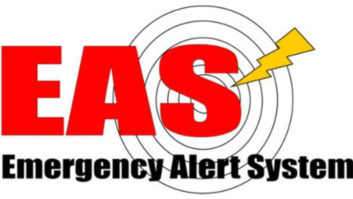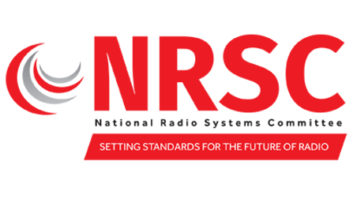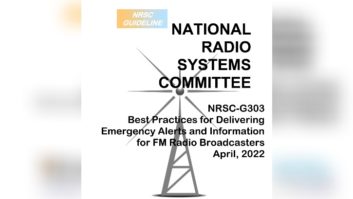With the National Weather Service confirming that the skies over most of the country were relatively clear on Sept. 28, 2016, the second nationwide EAS test went off at 2:20 pm Eastern that Wednesday afternoon.
Led by a triumvirate team of the Federal Emergency Management Agency, the Federal Communications Commission and the National Weather Service, the initial EAS test goals were relatively simple: to assess the reliability and effectiveness of FEMA’s Integrated Public Alert and Warning System (IPAWS) distribution architecture.
A secondary goal of the 2016 test for the FCC: to assess the effectiveness of measures that the commission took to address problems uncovered by the last nationwide EAS test in 2011. The commission introduced several measures to improve the EAS test, including the introduction of a national test event code, a national location code, and the ETRS online test reporting system.
Although the 2016 revealed that more than 20,000 broadcast and other EAS participants took part in the 2016 nationwide EAS test, test data also revealed that a range of operational and technical issues still need to be addressed, the FCC said.
- Almost half of test participants received the test over-the-air rather than from IPAWS, and thus were unable to deliver the CAP-formatted digital audio, Spanish, and text files as a result
- Some EAS participants failed to receive or retransmit alerts due to erroneous equipment configuration, equipment readiness and upkeep issues
- Some EAS participant groups had low participation rates, particularly low-power broadcasters.
As a result, the Public Safety and Homeland Security Bureau recommended that the commission take several steps to further improve the quality of information available in emergency alerts, the group said.
- In light of the additional capabilities offered by IP-based alerts, the commission should facilitate and encourage the use of IPAWS as the primary source of alerts nationwide
- The commission should examine how to improve and expand the content included in IPAWS alerts, including expanded use of multiple languages and text files
- The commission should take specific actions to address EAS participant errors and other anomalies uncovered in its analysis of 2016 Nationwide EAS Test. Such measures might include taking steps to improve EAS participants’ compliance with Part 11 rules as well as taking measures to improve the quality of the EAS, such as by allowing for limited sharing of ETRS data with state partners.
EAS participants were asked to submit information about the test via the FCC’s ETRS form by Nov. 14, 2016. Radio broadcasters were on the ball — radio had an average 87.3% participation rate, while television broadcasters had a 60% participation rate. Only slightly more than half of all cable and wireline video system participants filed in ETRS as art of the commission’s rules.
Excluding duplicate filings (of which there were more than 6,000), EAS Participants made 21,365 unique filings; at 78 percent, “this result is a significant improvement over the 2011 nationwide EAS test, for which EAS participants only made 15,897 unique filings,” the FCC said.
While preparing for the 2016 test, PSHSB received numerous phone calls from low-power radio and television broadcasters suggesting that many in those entities were not aware that they were required to participate in the EAS. Pulling out the numbers for low-power broadcasters, 61% of LPFM stations participated in the test (significantly lower than that of radio broadcasters overall at 87.3%); LPTV came in at 43.4%.
“The low participation rate of low-power broadcasters appears to have significantly reduced the overall participation rate of all broadcasters,” the FCC said in its report. Of the 2,206 radio broadcasters that were expected to file but failed to do so, 723 were LPFM broadcasters. Of the 1,289 television broadcasters that were expected to file but failed to do so, 1,115 were LPTV broadcasters.
But it appears that the initial EAS message was received loud and clear — at least for 95% of broadcasters. According to responses submitted in ETRS, 95.5% of all broadcasters received the initial message, with an 87% successful relay of the message. This dovetails with the data that came from FEMA’s earlier regional tests, which resulted in an 88% to 90% rate of successful relay of the NPT message among voluntary participants.
When it came to problems, test participants reported complications ranging from equipment configuration issues, equipment failures, failure to update equipment software, audio quality issues, source issues, clock errors, and, in some cases, noncompliance with Part 11 rules.












